Canada
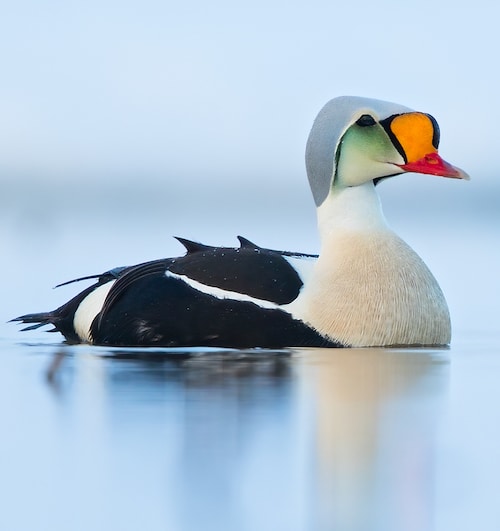
Canada is a country in North America. Its ten provinces and three territories extend from the Atlantic Ocean to the Pacific Ocean and northward into the Arctic Ocean, making it the world’s second-largest country by total area, with the world’s longest coastline (over 240,000 kilometres (c.150,000 miles). (By land area alone, Canada ranks fourth, due to having the world’s largest area of fresh water lakes.) It covers just under 10,000,000 km2 (c.3,850,000 square miles). Its border with the United States is the world’s longest international land border. I Canada shares a land border with Greenland to the northeast, on Hans Island and a maritime boundary with Saint Pierre and Miquelon to the southeast. Canada is also home to the world’s northernmost settlement, Canadian Forces Station Alert, on the northern tip of Ellesmere Island c.800k from the North Pole. It is a sparsely inhabited country of c.40 million people, the vast majority residing south of the 55th parallel in urban areas. Canada’s capital is Ottawa (c. one million population) and its three largest metropolitan areas are Toronto (c. 3m), Montreal (c.1.8m) and Vancouver (c.700,000).
Canada can be divided into seven physiographic regions: the Canadian Shield, the interior plains, the Great Lakes-St. Lawrence Lowlands, the Appalachian region, the Western Cordillera, Hudson Bay Lowlands, and the Arctic Archipelago. Boreal forests prevail throughout the country, ice is prominent in northern Arctic regions and through the Rocky Mountains, and the relatively flat Canadian Prairies in the southwest facilitate productive agriculture. The Great Lakes feed the St. Lawrence River (in the southeast) where the lowlands host much of Canada’s economic output. Canada has over 2,000,000 lakes—563 of which are larger than 100 km2 (40 square miles) and contain much of the world’s fresh water. There are also fresh-water glaciers in the Canadian Rockies, the Coast Mountains, and the Arctic Cordillera. Canada is geologically active, having many earthquakes and potentially active volcanoes.
Average winter and summer high temperatures across Canada vary from region to region. Winters can be harsh in many parts of the country, particularly in the interior and Prairie provinces, which experience a continental climate, where daily average temperatures are near −15 °C, but can drop below −40 °C with severe wind chills. In non-coastal regions, snow can cover the ground for almost six months of the year, while in parts of the north snow can persist year-round. Coastal British Columbia has a temperate climate, with a mild and rainy winter. On the east and west coasts, average high temperatures are generally in the low 20s °C while between the coasts, the average summer high temperature ranges from 25 to 30 °C, with temperatures in some interior locations occasionally exceeding 40 °C.
Much of Northern Canada is covered by ice and permafrost, but the Arctic has been warming at three times the global average as a result of climate change in Canada. The average annual temperature over land has risen in various regions. In the southern regions of Canada, air pollution from both Canada and the United States caused by metal smelting, burning coal and vehicle emissions has resulted in acid rain, which has severely impacted waterways, forest growth, and agricultural productivity in Canada.
The country is divided into 15 terrestrial and five marine ecozones. These ecozones encompass over 80,000 classified species of Canadian wildlife. About 65 percent of Canada’s resident species are considered “Secure”. Over half of Canada’s landscape is intact and relatively free of human development. The boreal forest of Canada is considered to be the largest intact forest on Earth, with approximately 3,000,000 km2 (1,200,000 square miles) undisturbed by roads, cities or industry. 42 percent of its land area is covered by forests (approximately 8 percent of the world’s forested land).
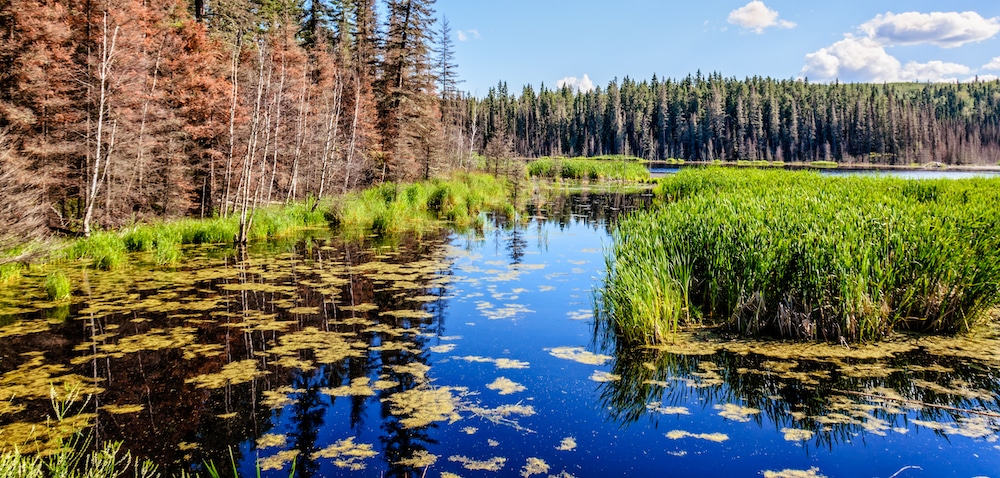
About 12% of the nation’s landmass and freshwater are conservation areas. Canada’s first National Park, Banff National Park spans over 6,600 km2 (2,500 square miles) of mountainous terrain, with many glaciers and ice fields, dense coniferous forest, and alpine landscapes. Canada’s oldest provincial park, Algonquin Provincial Park covers c.7,600km2 (3,000 square miles). It is dominated by old-growth forest with over 2,400 lakes and 1,200 kilometres of streams and rivers. Lake Superior National Marine Conservation Area is the world’s largest freshwater protected area, spanning roughly 10,000 km2 (3,900 square miles) of lakebed, its overlaying freshwater, and associated shoreline on 60km2 of islands and mainland. Canada’s largest national wildlife region is the Scott Islands Marine National Wildlife Area, which spans over 11,500 km2 and protects critical breeding and nesting habitat for over 40 percent of British Columbia’s seabirds. Canada’s 18 UNESCO Biosphere Reserves cover a total area of 235,000 km2 (91,000 square miles).
Birding Canada
Canada is a modern country, with civilised amenities, offering unhurried birding and incomparable scenery. There are around 640 species on the country list. Canada represents excellent value for money and there are lots of open places with no crowds (except Point Pelee National Park in May). Canada is the second largest country in the world, with a wealth of diverse habitats (coastlines, mountains, prairies, wetlands, taiga, tundra, extensive deciduous forests) and is a remarkably safe country (low crime rate, no inoculations needed etc.). Moreover, it has wood warblers in breeding plumage (36 species breeding); excellent tourism infrastructure, great mammal viewing, butterfly watching, and wildflower photography. However, there are no endemic bird species, so world twitchers can give it a miss.
For North-bound migration the best times to visit are mid-April to mid-May; for breeding birds it’s best in late May to early July; for south-bound migration visit in mid-July to October, and, for winter birding December through to February is best.
There are direct flights from Europe to Halifax, Montreal, Toronto, Vancouver, and elsewhere. Solo birding is often practical, as are international tour companies as birding guides cover much of the southern portions of the country. Otherwise go on a birding tour with a Canadian-based tour company; they know Canada best and cover more of the country.
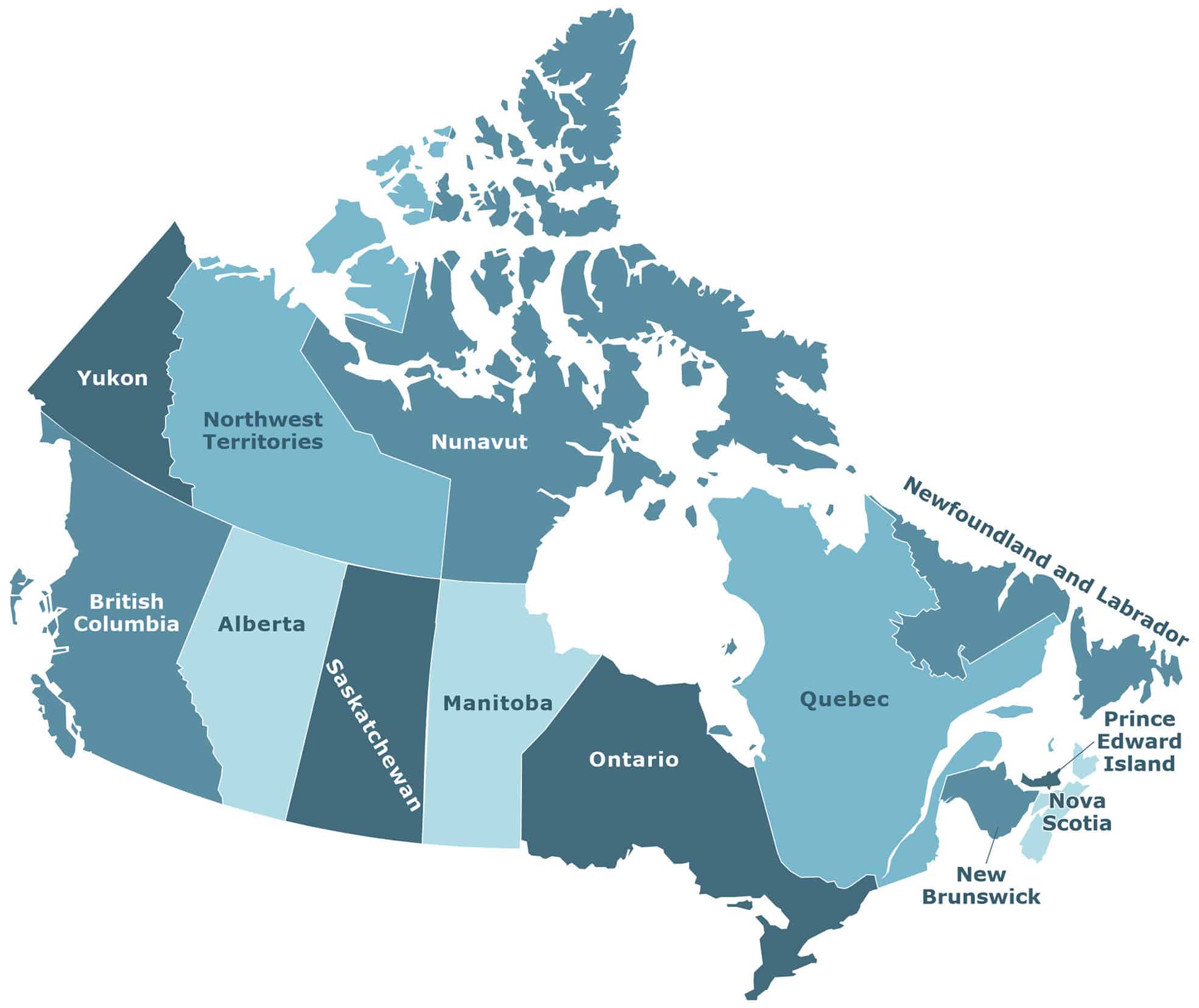
-
Alberta (grasslands and mountains)
Most visitors concentrate on the SW part of the province, because that is where Banff is, the gateway to the Rocky Mountains. Dinosaur Provincial Park -- species of the grasslands and badlands, Banff & Jasper National Parks -- montane species, Beaverhill Lake -- wader migration , Wood Buffalo National Park -- in the NW corner. Boreal species, and nesting site of the Whooping Crane. -
British Columbia (mountains, valleys, coastline)
The province with the largest species list in the country; most visits (and birding) occur in the SW corner, due to ease of access. Okanagan Valley -- birds of -
Manitoba (birds of the arctic, boreal forest, prairie wetlands, and grassland)
This province still holds the largest single-day bird total for Canada, at 205 species, in early June. Oak Hammock Marsh, Riding Mountain National Park, Whiteshell Provincial Park, SW. Manitoba -- grassland species, Churchill -- the -
New Brunswick (wader migration, boreal breeding species, salt marshes)
Grand Manan Island, Fundy National Park, Sackville Waterfowl Park, Kouchibouguac National Park, Isle Miscou, Cape Tormentine National Wildlife Area. -
Newfoundland & Labrador (Seabird colonies, Long Range Mountains, accessible arctic/alpine habitats)
East Coast: Avalon Peninsula, Cape St. Mary -
Northwest Territories (tundra, boreal forest, arctic coast)
Accessible by road to Fort Smith and Yellowknife via Alberta, and to Inuvik via the Dempster Highway from Whitehorse. And accessible by air. Quite remote, and expensive. Yellowknife area. Nahanni National Park (access by guided outfitter recommended). Inuvik and Tuktoyaktuk areas. Polar Bear Pass. -
Nova Scotia (Boreal Forest birds, salt marsh species)
-
Nunavut (tundra, arctic coast)
Canada -
Ontario (the largest province in Canada, so offering a little bit of everything)
Southern Ontario: Point Pelee National Park -- migration, Carolinian breeding species, Prince Edward Point Wildlife Area - migration, Algonquin Provincial Park -- -
Prince Edward Island (wader migration, idyllic pastoral landscape -- the smallest Canadian province)
Prince Edward Island National Park, East Point. -
Quebec (breeding birds, seabird colonies, whale watching)
One of the largest provinces in Canada, French-speaking, and with its vast northern areas difficult to access, except for roads to the Great Whale hydro project, and to Goose Bay, Labrador. Isle Bonaventure -- seabird colony, Gasp -
Saskatchewan (grassland birds, prairie wetlands, boreal forest, and birds of the Rocky Mountain foothills)
An 'undiscovered' gem. Incredible concentrations of birds during spring and autumn migration, and a superb diversity of breeding species. Grasslands National Park -- birds of the prairie, Cypress Hills Provincial Park -- an outlier of the Rocky Mountain foothills, with mountain species, The Great Sand Hills, Last Mountain Lake National Wildlife Refuge, Prince Albert National Park -- Boreal species, eight breeding owls, mammal watching par excellence. -
Yukon Territory (mountains, arctic coast)
Of the three northern territories, the easiest to access. The Alaska highway links Alberta with Alaska, passing through the Yukon, and the Dempster highway goes north from Whitehorse to the Arctic coast in the Northwest Territories. The Whitehorse area, Kluane National Park - mountains.
-
Number of bird species: 703
(As at April 2024)National Bird - Common Loon Gavia immer
- There are no true endemics in Canada but there are three birds that breed nowhere else:
- Ross's Goose Anser rossii
Whooping Crane Grus americana
Harris's Sparrow Zonotrichia querula
-
Avibase
PDFChecklistThis checklist includes all bird species found in Canada , based on the best information available at this time. It is based on a wide variety of sources that I collated over many years. I am pleased to offer these checklists as a service to birdwatchers. -
Wikipedia
Annotated ListOf the 703 species listed here, 235 are accidental. Twelve species were introduced to North America or directly to Canada, three species are extinct, and three (possibly four) have been extirpated. One species of uncertain origin is also included.
-
ABA Checklist
| [Birds of the Continental United States and Canada] | By American Birding Association | 7th Edition | Spiralbound | 162 pages, no illustrations | Out of Print | ISBN: 9781878788344 Buy this book from NHBS.com -
Birds of Atlantic Canada
| By Roger Burrows | Lone Pine Publishing | 2002 | Paperback | 336 pages, colour illustrations, maps | ISBN: 9781551053530 Buy this book from NHBS.com -
Birds of Canada
| By Tyler L Hoar, Ken De Smet, R Wayne Campbell & Gregory Kennedy | Lone Pine Publishing | 2022 | Hardback | 528 pages, 541 colour photos, 663 colour illustrations, colour distribution maps | ISBN: 9781551056036 Buy this book from NHBS.com -
Birds of Canada
| Edited by David M Bird | Dorling Kindersley Canada | Edition 3 | 2022 | Paperback | 520 pages, colour photos, colour illustrations, distribution maps | ISBN: 9780744057874 Buy this book from NHBS.com -
Birds of Western Canada
| Edited by David M Bird | Dorling Kindersley Canada | Edition 3 | 2023 | Paperback | 456 pages, colour photos, colour distribution maps | ISBN: 9780744070729 Buy this book from NHBS.com -
The North American Bird Guide
| By David Allen Sibley | Bloomsbury Publishing | 2014 | Paperback | 599 pages, plates with 6600 colour illustrations, 600+ colour distribution maps | Out of Print | ISBN: 9781472909275 Buy this book from NHBS.com

Audubon Bird Guide
Apple iOS | Android| Audubon Bird Audubon Society | 105 MB | Requires iOS 9.0 or later. | Requires Android 4.1 and up | Identify over 800 bird species. The Audubon Bird Guide is a free and complete field guide to over 800 species of North American birds, right in your pocket. Built for all experience levels, it will help you identify the birds around you, keep track of the birds you've seen, and get outside to find new birds near you.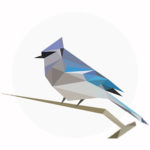
BirdNET
Apple iOS | Android| Bird sound identification | Stefan Kahl | Requires Android 5.0 and up | How can computers learn to recognize birds from sounds? The BirdNET research project uses artificial intelligence neural networks to train computers to identify more than 500 of the most common species of North America and Germany. Help us test this prototype app by recording a file using the internal microphone of your Android device and seeing if BirdNET correctly identifies the probable bird species present in your recording.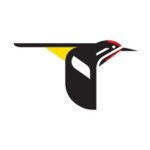
Merlin Bird ID app
Apple iOS | Android| Instant Bird Identification | Cornell University | 72.4 MB | Requires iOS 9.0 | What's that bird? Merlin Bird ID helps you solve the mystery in 5 questions, or with a photo of a bird. First, Merlin asks you a few simple questions. Then, almost like magic, it reveals the list of birds that best match your description. Pick your bird, then delve into more photos, sounds, and ID tips about your bird!
Sibley Birds
Apple iOS | Android| (Birds of North America) | mydigitalearth.com | 2nd Edition | The new Sibley Birds app has arrived with comprehensive, up to date information of over 930 North American species. All the detailed artwork from David Sibley’s Guide to Birds Second Edition is included as well as thorough descriptions and distribution maps.Useful InformationFestivals & Bird Fairs-
Creston Valley Bird Festival
WebpageGet ready to spread your wings and join us for an unforgettable celebration of feathered friends and the vital wetlands they call home during their annual migration north. The Creston Valley Bird Festival is an exciting event that takes place every second weekend in May, where you’ll get the chance to rub shoulders with bird experts – explore and deepen your appreciation for the great outdoors with presentations, hikes, field trips, and tours by canoe or kayak. Next festival is May 10-12, 2024! -
Festival of Birds
WebsiteWelcome to Point Pelee National Park, the place where birds and birders meet. The Friends of Point Pelee and Point Pelee National Park invite you to celebrate spring migration at the 2024 Festival of Birds from May 1 to May 20. -
Wings Over the Rockies Nature Festival
WebsiteOur 27th annual festival is located in the beautiful upper Columbia River Valley centred around the mountain town of Invermere, British Columbia. Our Events Calendar preview online starts Thursday, March 28. Buy your tickets online starting Tuesday, April 9 at 10:00am, MDT...
Organisations-
Audubon Society Canada
WebpageOur Canada program is a key part of Audubon’s total-flyway conservation vision that uses applied science to ensure that bird conservation efforts are initiated at the places and at the scales necessary to protect birds throughout their full lifecycles. Audubon is working to elevate support for initiatives such as the Indigenous Protected and Conserved Areas and Indigenous Guardians programs across Canada. -
Birds Canada
WebsiteBirds Canada is a national charitable organization dedicated to bird conservation. Every day, our thousands of caring donors, passionate staff, and more than 70,000 volunteers are taking action to help save wild birds and their habitats. Together, we are Canada’s voice for birds. -
Boreal Songbird Initiative
WebsiteThe Boreal Songbird Initiative (BSI) is a non-profit organization dedicated to outreach and education about the importance of the Boreal Forest region to North America's birds. BSI works to mobilize environmental and birding groups and individuals to influence Canadian government and industry policies -
Canadian Peregrine Foundation
WebsiteWe are the Canadian Peregrine Foundation, a Canadian Registered Charity here in Canada, (located in Toronto Ontario currently); and have been involved in peregrine (anatum sub) recovery, restoration, monitoring, and satellite tracking of same for the past two plus years. -
Canadian Wildlife Federation
WebsiteSince 1962, CWF has advocated the protection of Canada`s wild species and spaces. Representing over 300,000 members and supporters, the federation is one of Canada`s largest non-profit, non-governmental conservation organizations… -
Important Bird Areas
WebsiteCanada's Important Bird Areas program is a science-based initiative to identify, conserve and monitor a network of sites that provide essential habitat for Canada's bird populations -
Nature Canada
Website1 Nicholas Street, Suite 606, Ottawa, Ontario K1N 7B7. + 1 613 562 3447; cnf@cnf.ca Conserving Canada's backyard. The national voice for the protection of nature, its diversity, and the processes that sustain it… -
Parks Canada
WebpageNational parks are incredible places for bird watching. Whether you are a Sunday birdwatcher or a seasoned birder, these suggestions are definitely worth the detour. Check out our recommendations below! -
Society of Canadian Ornithologists
WebsiteThe Society is the body of Canada's ornithological community, whose mandate is to administer awards, publications, and interconnection with the other professional ornithological societies in Canada, North America and worldwide…
Reserves-
Important Bird Areas in Canada
WebsiteSatellite ViewImportant Bird and Biodiversity Areas in Canada -
Parks Canada
WebsiteSatellite ViewA useful site to gather background information if you are considering travelling to Canada. -
Wetlands
WebpageSatellite ViewCanada currently has 37 sites designated as Wetlands of International Importance (Ramsar Sites), with a surface area of 13,086,767 hectares.
Guides & Tour Operators-
Bird Treks
Tour OperatorBird Treks has been providing small group and custom birding tours for over 20 years. Visit their website to see the incredible tours available, including British Columbia, Manitoba, New Brunswick, and Quebec! -
Birding Ecotours
Tour OperatorSouth-eastern Manitoba has become a premier location for northern boreal forest owls. The list of owls present during most winters is very impressive - Great Gray, Boreal, Barred, Great Horned, Snowy, Short-eared and Northern Hawk-owl, with Eastern Screech-owl, Long-eared and Northern Saw-whet Owl. Please contact us for more details. -
Eagle-Eye Tours
Tour OperatorEagle-Eye Tours offers exceptional Birding and Wildlife Tours worldwide -
Naturalist Journeys
Tour OperatorSeveral tours on offer such as: Newfoundland & Labrador Cruise... -
Rockjumper Birding Tours
Tour OperatorThe Canadian Arctic remains one of the most pristine parts of our planet, and our Northwest Passage birding and wildlife cruise traverses this magical area in search of some very special birds and mammals.
Trip Reports-
2002 [05 May] - Bo Beolens
PDF ReportThis was the second annual overseas trip of the disabled birders association The trips are designed for dba (now called ‘Birding For All’)) members and others who have mobility problems. This trip had 8 participants, 3 wheelchair users (including one person who cannot stand or walk at all), three people with moderate walking difficulty and two able bodied people. In fact, there were 4 married couples. Participants were Bo & Maggie Crombet-Beolens (Bo is otherwise known as the Fatbirder), Brian & Joanna Anderson, Lawrence & Anne Robinson [all of whom went on the previous dba trip to Kenya] and John & Selina Cook. -
2017 [03 March] - Sam Woods - Winter Owls and Boreal Birding
PDF ReportThis short custom tour was set up at the last minute (in early February), when news came through of fair numbers of Great Gray Owls around at that time in Ontario. The person, for whom this was arranged, had the main objective of finding this so-called “Phantom of the North”... -
2018 [08 August] - Greg Smith
PDF ReportThe walk back to the hotel produced an alternate-plumaged Common Loon, Pine Siskin, Black-capped Chickadee, and Red-breasted Nuthatch. -
2019 [07 July] - Greg Smith - Fins & Fiddles A Canadian Maritimes Cruise-
PDF ReportThe day began with fine weather, so fine that some of us did a wildlife and bird walk along the Sydney River and over to Wentworth Park. Our first sighting was several American mink’s that use the rock revetment along the river as both foraging grounds and home base. We saw at least five different individuals as we worked our way along the river. -
2023 [05 May] - Jared Clarke - Migration
ReportSpring migration is an exciting time for birds & birders alike, and nowhere showcases it better than southern Ontario. O -
2023 [07 July] - John Carlson
PDF ReportAnnotated list
Other Links-
Bird Studies Canada
WebsiteBird Studies Canada is recognized nation-wide as a leading and respected not-for-profit conservation organization dedicated to advancing the understanding, appreciation and conservation of wild birds and their habitats, in Canada and elsewhere, through studies that engage the skills, enthusiasm and support of its members, volunteers, staff and the interested public. -
Discover Some Of Canada’s Best Spots And Events For Birding
WebpageBirding isn’t just for avid ornithologists – the hobby appeals equally to families with young children, photographers, sustainability advocates and people seeking an excuse for a stroll. -
Environment Canada
WebsiteEverything you could possibly want to know about the environment from a Canadian perspective. The site is in French & English. -
Nature Sounds.ca
WebsiteNature Sounds.ca is dedicated to sharing the sounds and experiences of the woods and forests of northeastern North America. When recording, meticulous care is taken to exclude man-made sounds, or the sounds of domestic animals. A pristine audio experience of wilderness is the result -
Species at Risk in Canada
WebsiteThe highest rates of species extinction are occurring not in Canada, but in tropical rain forests that are being rapidly cleared. However, the rate of species extinction is high in Canada, as well…
BlogsFatbirder - linking birders worldwide...
Skip to content

